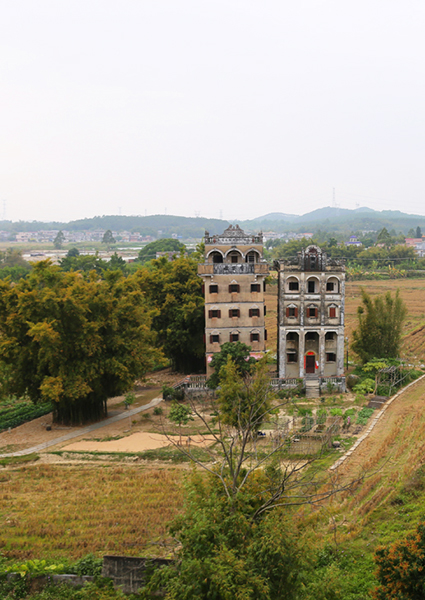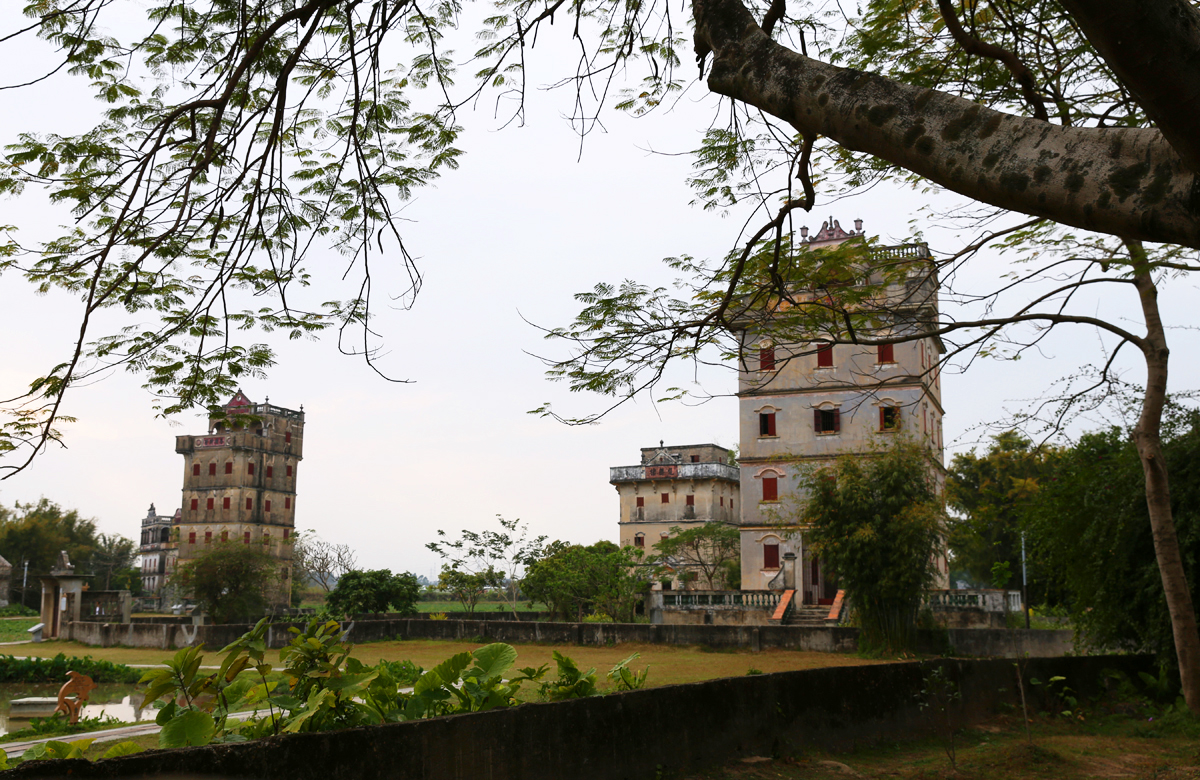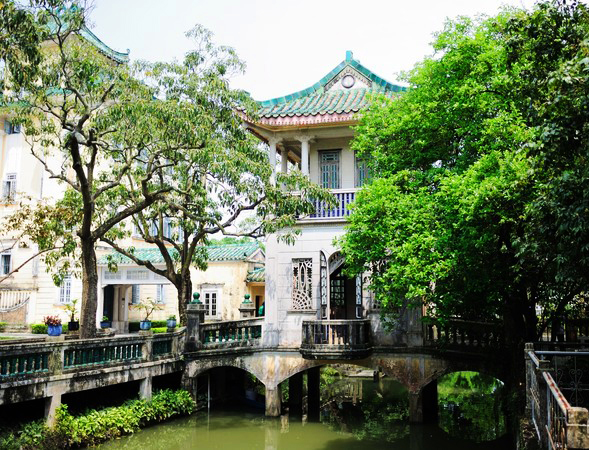
Looming over the countryside of Guangdong province, the Kaiping Diaolou have a certain haunting grandeur that is undeniably captivating. These fortified watchtowers are located mainly in Kaiping County and are part of an architectural tradition that dates all the way back to the Ming Dynasty (1368-1644). Their unusual mixture of Western and traditionally Chinese architectural features, coupled with their seamless integration into the natural landscape, make them unique among historical attractions in China. Yet it seems their initial purpose, to keep bandits and strangers away, has worked a little too well! In spite of being collectively designated a UNESCO World Heritage Site in 2007, they still see very little tourist traffic and represent one of the country’s most underrated hidden gems.
While multi-storeyed defence towers were a staple feature of Kaiping County towards the end of the Ming Dynasty, the first proper diaolou weren’t built until the start of the Qing Dynasty (1644-1912). They reached their peak popularity during the 1920s and 1930s, during which time there were over 3,000 of these magnificent fortresses spread across Guangdong province. Nowadays approximately 1,800 diaolou remain in Kaiping, with a further 500 being found in Taishan.
They can be roughly separated into three different types depending on their function: communal diaolou, which were built by several families to be used as a temporary refuge during times of disaster; residential diaolou, which belonged to wealthier, individual families and acted as homes; and defensive diaolou, which solely functioned as watchtowers to guard the local community. They are mainly built of stone, pisé (compressed earth), brick, or concrete and have characteristically narrow windows and doors, thick walls, and reinforced structures.

Historically speaking, the residents of Kaiping County were well-known for emigrating abroad, as their proximity to the coast made maritime travel much easier. After amassing a substantial fortune, many of these overseas Chinese would often return and settle back in Kaiping. However, their wealth made them a target for roving bandits, so they began building the diaolou as a form of protection. As an area of rice production, the region was also subject to frequent flooding, so the diaolou provided the perfect refuge during times of inclement weather.
Since these returning émigré had travelled throughout the West, they wanted to imitate many of the Western architectural trends they had witnessed, and this is reflected in the Baroque, Roman, and Gothic exteriors of the diaolou. In some cases, the local builders would work simply from images on postcards that were sent from abroad, adding their own unique twist to their constructions. However, the interiors of the diaolou remained distinctly Chinese, resulting in a rare and beautiful fusion between Western and Eastern architectural styles. In many ways, these flamboyant designs were a way for the returning businessmen to show off their immense wealth, and families would often compete with one another over who could afford the most lavish diaolou.

The largest is known as Ruishi Diaolou and can be found behind the village of Jinjiangli. It was originally constructed in 1921 and is a staggering nine storeys high, with a Byzantine roof and a stately Roman dome. While it is technically the tallest, the most luxurious diaolou is to be found at Li Garden. This colossal complex is made up of one diaolou, six villas, two gardens, several waterways, and a number of bridges, and was the brainchild of a wealthy Chinese businessman named Xie Weili. After returning from the United States, Xie set about building his extravagant new home and even imported materials from overseas to add a touch of authenticity.
At the time of its construction in 1936, it came equipped with several modern Western features, such as flushing indoor toilets, sinks, marble tiles, and fireplaces. Bear in mind, the typical residence in those days was usually a small cottage with an outdoor toilet, so Xie’s home was nothing short of revolutionary! Its finest features include a 20-metre-tall (66 ft.) golden pavilion shaped like a birdcage, a green pond for turtles, and a private canal that links the complex to Hong Kong, over 133 kilometres (83 mi) away. Every window of every building was reinforced with four panes of glass to protect it against firearms. After all, when you’re rich enough to afford your own human bird-cage, you’re bound to attract fowl play!
Other diaolou of note include Fangshi Denglou, which is nicknamed the “Light Tower” because of its enormous searchlight, and Nan Lou, where locals in the town of Chikan famously fought off the Japanese invasion for 7 days before tragically being captured and killed. While they may not be among the oldest historical attractions in China, the Kaiping Diaolou provide an invaluable insight into the country’s modern history and the intermingling of culture between the East and the West.
Explore more about the unique Diaolou with us on the exclusive travel: Explore the Ancient Fortresses of Southeast China